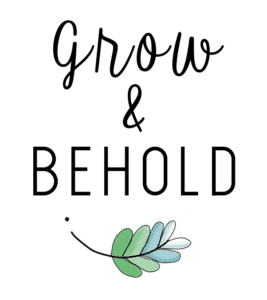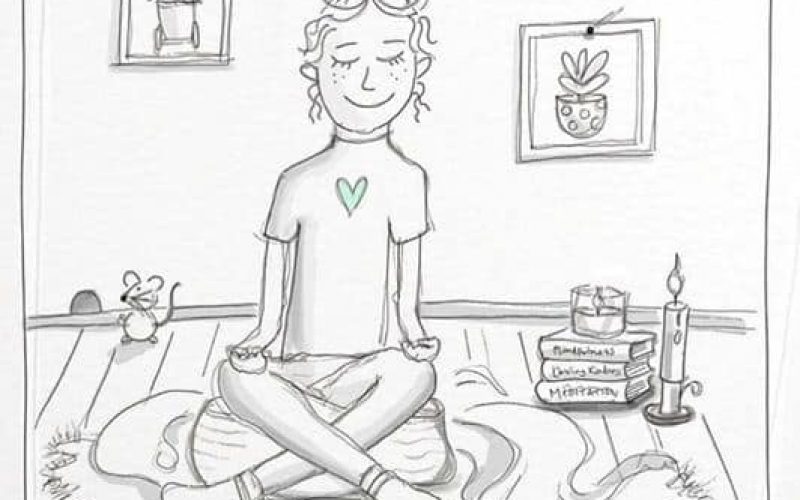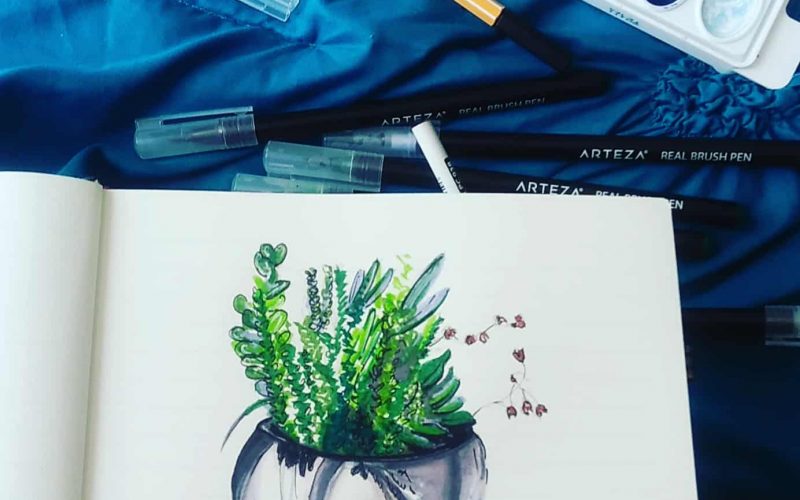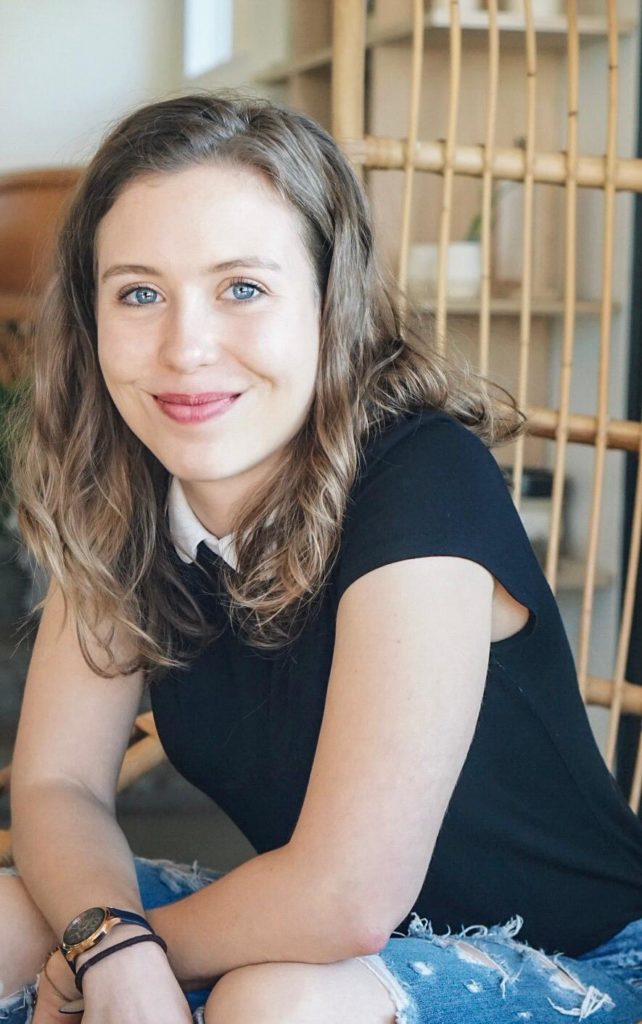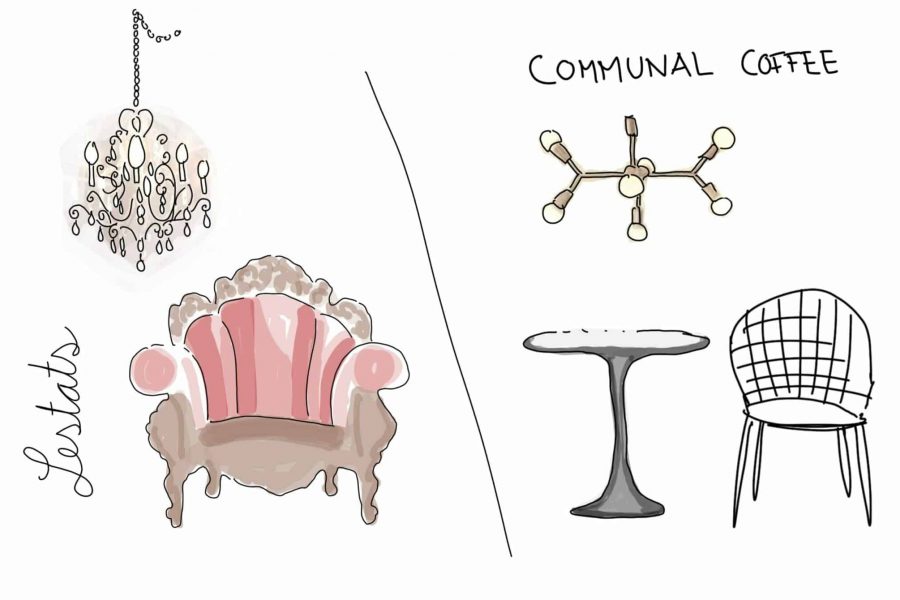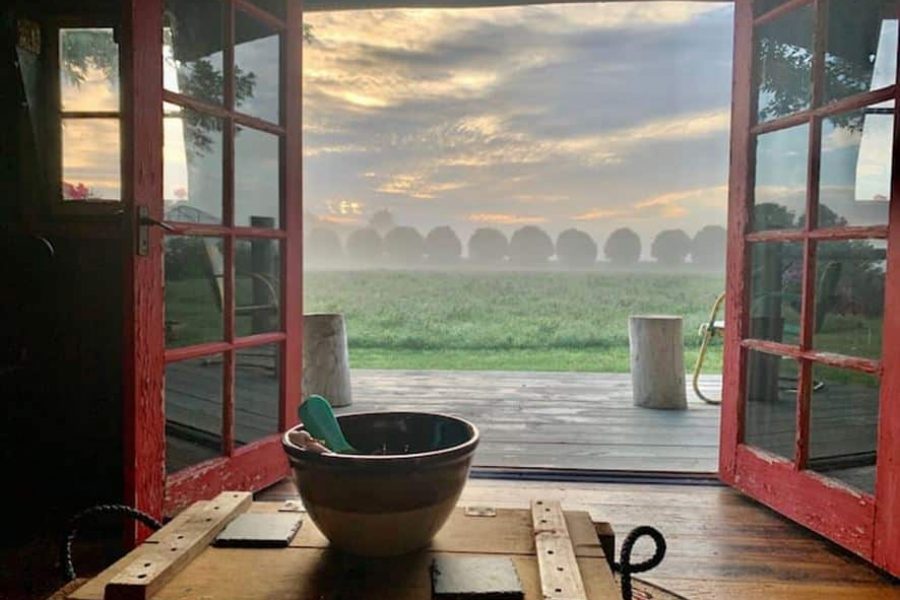When I was studying for my undergraduate in Interior Design, I loved going to coffee shops. There was something calming about the bustle of a local coffee shop, the smell of brewing coffee and the snippets of conversations from locals. I would place my stack of books on the table and pull out my laptop. If I was lucky, there would be a power source close by, comfortable seating and free refills on coffee. I wonder why it was so much easier for me to study at a coffee shop than at home at my desk. Oldenburg (1997) referred to this type of setting as a “third place.” (p.1) A third place constitutes any type of “informal public gathering place.” (p.1) The term third place stems from the idea that our home is our first place and work is our second place. So where do we go when we need a break from our home-life and we want to get away from the office? We head to the third place to connect with others, read a book, meet with a friend or strike up a conversation with a stranger. Third places include private businesses or public places, such as barber shops, parks, grocery stores, bars and town squares. Non-permanent places also fall under the category of third places. Have you ever been to a farmer’s market? If so, then you entered a third place (Bernhardt & Stoll, 2010).
History of Third Places
The concept of third places is not just as recent as the surge of coffee shops. People have gathered over the past centuries in saloons, general stores, candy shops, diners, and even post offices. These places served as “social anchors of community life” (Oldenburg, 2010, p.2). Oldenburg made a point that these places were conveniently located, which is one of the factors that establishes a third place. He also states that third places work best when they are local, independently owned, commercial establishments, and are within walking distance.
When I think of my condo in Encinitas I realize I am surrounded by third places. I can walk to the little corner market, take my bike to a handful of local coffee shops and even swing by the farmer’s market on Sundays (although the current pandemic is making this more difficult). I enjoy my little beachside home and wonder how much of the proximity to third places influences the way I experience day-to-day life.
Benefits of Third Places
“I need coffee!”
Visiting a coffee shop does more than just provide you with a coffee fix, although I agree getting your oat milk latte is important, too. According to Oldenburg (1997), third places help unify neighborhoods because people can get out of their homes and meet each other. In areas where there is a lack of third places, people often go about their lives without connecting with their neighbors.
Research. A study completed through observation of three different coffee shops and through conducting interviews showed a “positive correlation between length of patronage and [people’s] sense of attachment to their community” (Waxman, 2006, p. 35). Third places also provide a place for visitors and newcomers to feel welcomed, and allow people with special interests to gather and connect. Have you ever noticed people knitting together or leading their book club in public?
Hit the town! (or local coffee shop)
Coffee shops aren’t just a great place for studying and eating your favorite avocado toast. Oldenburg (1997) believes that third places are a great place for entertainment, and I agree. I typically feel the most fulfilled when I am having a great conversation with a friend, and a coffee shop is a wonderful location to experience such a conversation. I feel inspired by my surroundings and feel like I am part of something bigger that extends beyond myself. Even if you are riding solo at a coffee shop, the act of people watching can be highly entertaining. In an era where we are so attached to our phones and are binge-watching Netflix, I think it is healthy to get outside and visit a local coffee shop.
Elements of third places
“What’s the WIFI password?”
Although people-watching is a fun pastime at coffee shops, sometimes I do need to put my head down and get some work done. I personally think that the best coffee shop supports a variety of different activities. So what are some important elements of a coffee shop?
Seating and Shelter.
Research. A study conducted using visual surveys and interviews on Main streets in Massachusetts found that adequate seating and shelter are important elements in third places and these elements distinguish a third place from other businesses (Figure 1). Personalization and permeability to the street also played a role, but seating and shelter surpassed these characteristics (Mehta & Bosson, 2010). I am always excited when I find a coffee shop with comfortable seating, especially if I have some “serious” AutoCAD work to do.
Figure 1
Bar Chart of Seating and Shade Compared at Third Places and Non-Third Places
Note. Adequate seating and shelter are important elements in third places and these elements distinguish a third place from other businesses (Mehta & Bosson, 2010).
Proximity and vibe. Although I don’t think proximity is a necessity (there are many coffee shops I drive to), the way Oldenburg defines a third place is being close to your home. If you don’t have a coffee shop near you I think you can still experience the benefits of community in the location of the coffee shop. I love how a coffee shop in Hillcrest has a different vibe than a coffee shop in La Jolla. Each one has its own personality and you might explore where you feel the most comfortable. Do you like the grungy couches at Lestats with bookshelves and art? Or do you feel more drawn to the hipster, clean, modern design at Communal Coffee? The choice is yours! (Figure 2)
Figure 2
Illustration of the Vibe of Two Different Coffee Shops
Note. Each coffee shop has its own vibe depending on what community it is in. (image by author)
Lighting and cleanliness. Further elements that add to the experience of a third place are lighting, cleanliness and view (Waxman, 2006). Survey results reveal that these are some of the most important considerations of visiting a coffee shop, along with comfortable furniture and pleasant aroma (no one wants to smell dirty socks while sipping their matcha latte). From personal experience I can say that lighting is very important, but dependent on the type of experience I am looking for. Do I want to get cozy with some hot cocoa and have a deep talk with a friend under the soft glow of a lamp or do I need to stay awake so I can crank out a paper and not damage my eyes? Similar to seating, I believe here it is good to have a multitude of options that support different activities.
Views. I don’t think we consider views enough as part of the design process. What we see out of a window can change the way we experience a space. I love to visit the Living Room in La Jolla because there is one seat that allows you to catch a glimpse of the ocean past the alley of a building (Figure 3). It isn’t a full-on picture view, but more of a small taste, a pleasant surprise. I believe there is something to be said about spontaneous discoveries that leave you in awe. However, whether you do have a full-on view of the ocean, or just a small peak at a tree, I believe views add to the experience.
Figure 3
Illustration of the View out of a Window at the Living Room Café in La Jolla
Note. Views are an important element when it comes to design and experience of a coffee shop. (image by author)
And now for the bonus round, here are some of my favorite elements of a coffee shop
-comfy seating
-plants
-good coffee and pastries
-clean bathrooms
-art on walls
-bookshelves with books and games
-enough indoor seating and tables
-nooks and crannies
-lamps
-friendly people
As a result of the current pandemic it is more difficult to gather in public places. Social distancing has become the new term and exposing yourself to other people in a coffee shop might not be the best choice at the moment. However, I think especially during this time we need to reflect on the importance of social connection and beauty of third places and the opportunities they provide. Zoom has provided a new way to connect with people but in my opinion nothing beats sitting down at a coffee shop and having a conversation over a cup of coffee. Hopefully we can experience this again soon and return to our favorite third places. I will see you at the coffee shop around the corner 😉
References
Bernhardt, A. & Stoll, L. (2010). Creating third places- Places where communities gather. Downtown
Economics, (172).
Mehta, V. & Bosson, J. K. (2010). Third places and the social life of streets. Environment and Behavior,
42(6), 779–805. https://doi.org/10.1177/0013916509344677
Oldenburg, R. (1997). Our vanishing “third places”. Planning Commissioners Journal, (25) 6-10.
Waxman, L. (2006). The coffee shop: Social and physical factors influencing place attachment. Journal of
Interior Design, 31(3), 35-53
